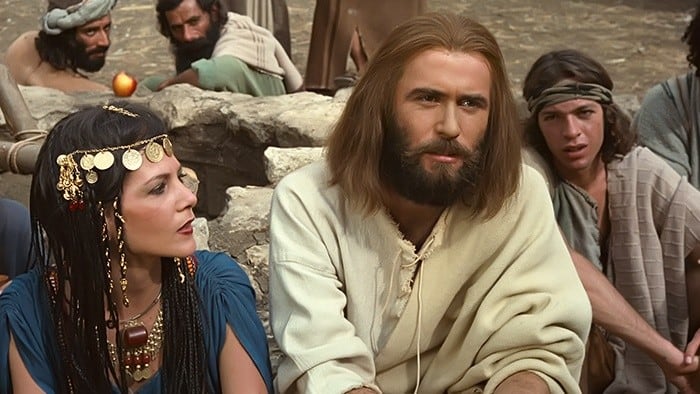There are a lot of Marys in the Bible-the New Testament mentions six! The Mary we know as Mary Magdalene draws her title from Magdala, her city of origin. Luke tells us that Jesus cast seven demons out of her (Luke 8:2). Afterward, she became His follower.
John’s Gospel tells us that she was one of the Marys present at the crucifixion:
“Near the cross of Jesus stood his mother, his mother’s sister, Mary the wife of Clopas, and Mary Magdalene” (John 19:25, New International Version).
And she was the first witness to the resurrection:
“Now Mary stood outside the tomb crying. As she wept, she bent over to look into the tomb and saw two angels in white, seated where Jesus’ body had been, one at the head and the other at the foot.
They asked her, ‘Woman, why are you crying?’
‘They have taken my Lord away,’ she said, ‘and I don’t know where they have put him.’ At this, she turned around and saw Jesus standing there, but she did not realize that it was Jesus.
He asked her, ‘Woman, why are you crying? Who is it you are looking for?’
Thinking he was the gardener, she said, ‘Sir, if you have carried him away, tell me where you have put him, and I will get him.’
Jesus said to her, ‘Mary.’
She turned toward him and cried out in Aramaic, ‘Rabboni!’ (John 20:11-16, NIV).
Mary’s devotion to Jesus put her in the spotlight of several stories in the Gospels. Her life and her faith both have a lot to teach us about following Jesus. Here are three lessons we can learn from Mary Magdalene.
1. You don’t have to be defined by your past
There’s a lot of speculation about Mary’s background. People have tied Mary to the sinful woman in Luke 7:36-50. Many assume she was a prostitute or woman of ill repute. But there really isn’t any biblical basis for portraying her that way.
As Luke tells us, Mary had seven demons cast out of her. Whatever her background was, she suffered before meeting her Savior. But Mary isn’t defined by who she was before Jesus. All that matters is who she became after discovering Him.
Like Mary, we don’t have to let our past dictate how we see ourselves. Paul explains it this way, “Therefore, if anyone is in Christ, the new creation has come: The old has gone, the new is here” (2 Corinthians 5:17, NIV)!
2. Jesus should be the center of your world
After Mary’s first encounter with Jesus, He becomes the sun that her life revolves around. Luke tells us:
“After this, Jesus traveled about from one town and village to another, proclaiming the good news of the kingdom of God. The Twelve were with him, And also some women who had been cured of evil spirits and diseases: Mary (called Magdalene) from whom seven demons had come out; Joanna the wife of Chuza, the manager of Herod’s household; Susanna; and many others. These women were helping to support them out of their own means” (Luke 8:1-3, NIV).
Not only did Mary follow Jesus and the disciples from town to town, but she and some other women helped to support Christ and the disciples financially. This role continued throughout His ministry.
Matthew tells us that they were present at the crucifixion, and followed Jesus all the way to Galilee to take care of Him:
“Many women were there, watching from a distance. They had followed Jesus from Galilee to care for his needs. Among them were Mary Magdalene, Mary the mother of James and Joseph, and the mother of Zebedee’s sons” (Matthew 27:55-56, NIV).
It’s no surprise that she would find herself center stage at the resurrection, too.
We should follow Mary’s example. When we encounter Jesus, we shouldn’t simply return to the life we left. He changes everything. Our whole life becomes about following and serving Him until-like Mary-our story becomes intertwined and indistinguishable from His.
3. Jesus uses the weak things of the world to shame the strong
In his first letter to the Corinthians, Paul talks about the gospel as being foolishness. The world doesn’t understand it, so they discount and dismiss it.
According to Paul, God did that on purpose:
“But God chose the foolish things of the world to shame the wise; God chose the weak things of the world to shame the strong. God chose the lowly things of this world and the despised things-and the things that are not-to nullify the things that are, so that no one may boast before him” (1 Corinthians 1:27-29).
We see a perfect example of this principle in Jesus’ relationship with Mary Magdalene. In a time when women were seen as secondary citizens with no real autonomy, Jesus demonstrated a special tenderness and care for women. We see this in His choice to reveal Himself to Mary first after the resurrection.
This is the most critical event in history, and Jesus made a woman the first witness. He even encourages her to tell the disciples (John 20:17). The irony is that they don’t believe Mary and the other women (Luke 24:11).
We need to be careful not to dismiss things that don’t follow our expectations, because Jesus doesn’t always do what we expect. He delights in working out His plan in the most unlikely of ways. He did that through Mary, and if we’ll let Him, He’ll do it through us, too!
Discover the Mary you didn’t know
If you’re interested in learning more about Mary Magdalene, check out “Magdalena: Released from Shame.” This Jesus Film Project® movie reimagines Jesus’ ministry through the eyes of Mary Magdalene.
All Scripture references quote the New International Version unless otherwise noted.
